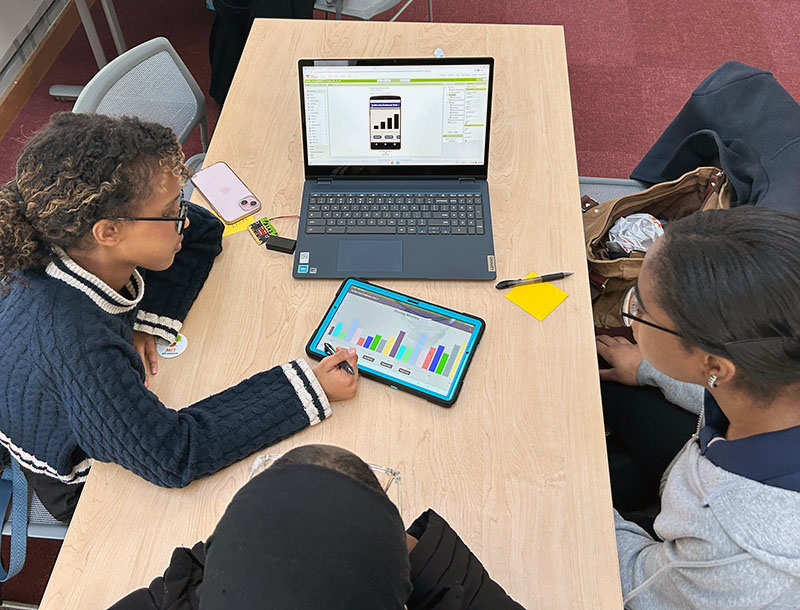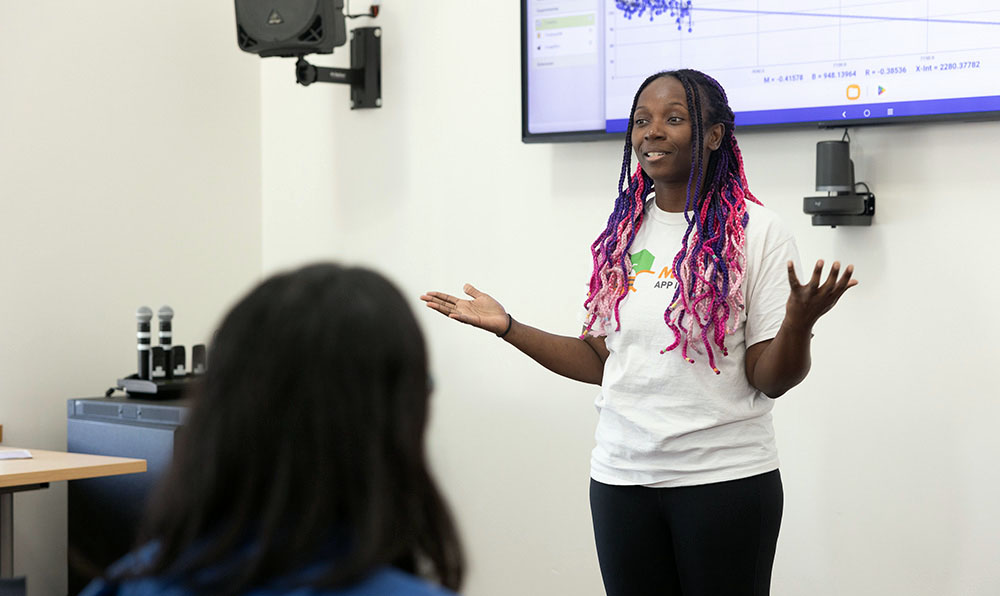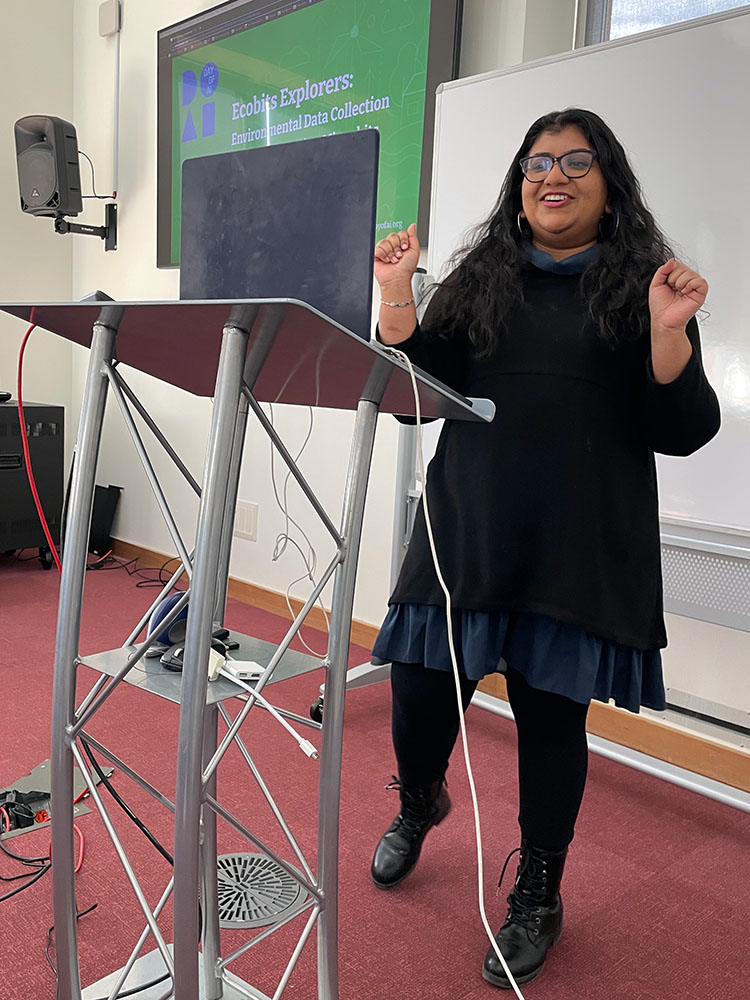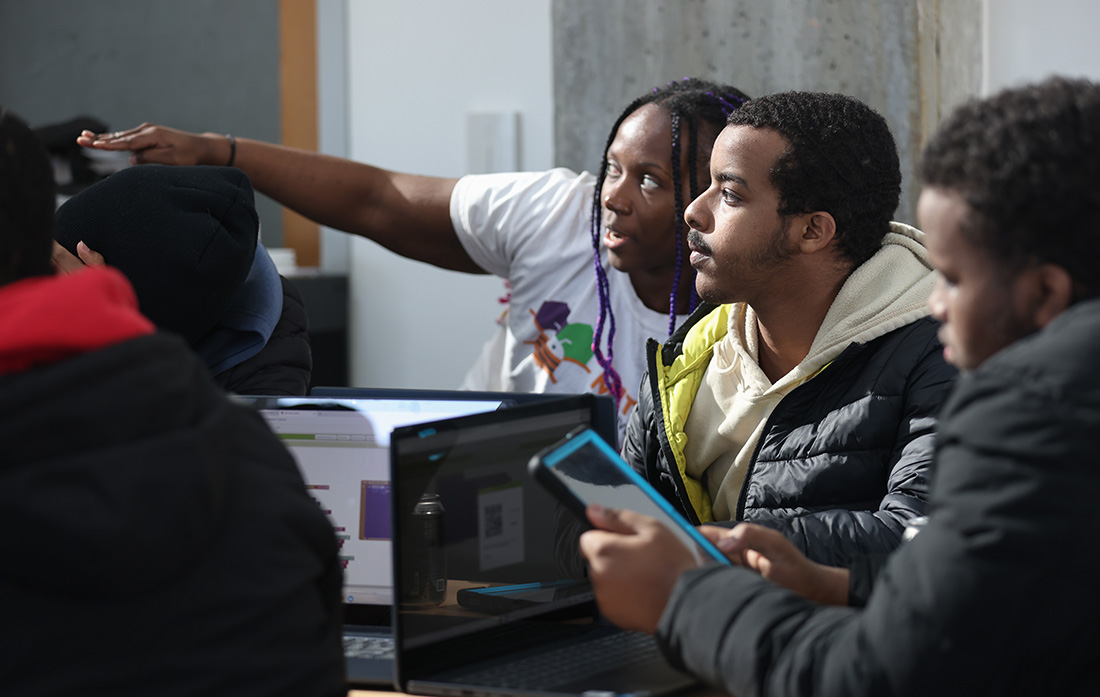Boston Public School Students Consider AI and Data Science
Mar 6, 2024 robert's Blog

Solving thorny, real-world problems often requires data to better understand them. But working with data is not always straightforward. How do I collect information relevant to the issue I want to work on? How can I present data to other people so they can see the current state of the problem and its future implications?

High schoolers from Boston Public Schools explored these questions during a three-day workshop in a sunlit meeting room in MIT’s Stata Center overlooking the Charles River. The event was organized by MIT’s Responsible AI for Social Empowerment and Education initiative (RAISE) in collaboration with the Boston Private Industry Council (PIC).

Fourteen students came to campus from the city’s Charlestown High School, Josiah Quincy Upper School, and John D. O'Bryant School of Math & Science. (They were all on their February vacation, no less!) The workshop was part of an experimental new curriculum that blends data science and AI to collect and analyze data on climate change.
"Unlocking the power of data opens new doors for understanding our world and crafting solutions that were once out of reach," said Prerna Ravi, an MIT Ph.D. student who led the second day of the workshop. "Through this workshop, we've tried to move beyond traditional educational pedagogy, empowering students with tools to dissect and address the complexities of climate change."
Throughout the event, students developed new data visualization skills, practiced AI analysis and traditional mathematical analysis, and brainstormed social or environmental issues to apply their new skills.

Day one began with the basics of making phone apps with MIT App Inventor and its generative AI capabilities. Students built custom apps that called upon ChatGPT and DALL·E to deliver information or images inside the phone. MIT students assisted in the workshop and contributed to informal presentations on their backgrounds. Gisella Kakoti (MIT ‘24), for instance, discussed her academic journey as an engineer and her next steps as a programmer in industry.

On the second day, students worked in teams with Bluetooth sensors to gather temperature and light data around the room and graph it on their phones. They started brainstorming ideas for long-term projects to collect sensor data around their schools and communities. To practice visualizing data, the students worked through various chart types on the mobile interfaces, sussing out which chart fit which data. “I like how concepts about math intersect with computer science,” noted one participant.
On the last day, students practiced with a dataset on the number of days certain US lakes were frozen each winter going back 70 years. They visualized the online dataset and applied a traditional mathematical model. They found that using models requires skills outside of cut-and-dried math, however. Which information is important? How well does the model fit the data, and how can you improve your dataset to get a better fit? Data also needs to be reviewed and cleaned of anomalies. What do the numbers mean in the context of lake ice melt over decades?
Practice with generative AI and prompt engineering helped bring context and an additional layer of analysis to the lake data. Students practiced sending tabular data to a generative AI chatbot inside their apps by tweaking their instructions on handling and analyzing the dataset. Tools like ChatGPT proved useful, but students discovered that generative AI could do some things well (putting the data into a real-world context) and some things not so well (sophisticated mathematical procedures like modeling the future of the lake ice). We all learned that, just like kids in school, AI chatbots need to be reminded to show their work to produce better results!

With such skills fresh in hand, students ended the workshop by generating ideas for data science apps that address climate change. Teams came up with the following areas for further investigation, each nominating a representative to describe the concept:
- “How much CO2 are trees in certain areas absorbing? Can we create a graph on a phone?”
- “Can we graph the number of hostile weather patterns to learn where climate change is going?”
- “How about sampling the DNA found in honey to show what plants are nearby and if the number of plants is increasing or decreasing?
Pondering these questions, graduate student Prerna remarked, “I’m thinking students’ newfound skills in data analysis and AI will be more than just academic tools. They’ll also be tangible assets in our collective fight against environmental challenges.”

Boston Private Industry Council (PIC) connects local students with education and job opportunities relevant to the needs of area employers. PIC chose the AI track to give kids an opportunity for a hands-on learning experience in artificial intelligence technologies and invite them to take the next steps to explore further.








